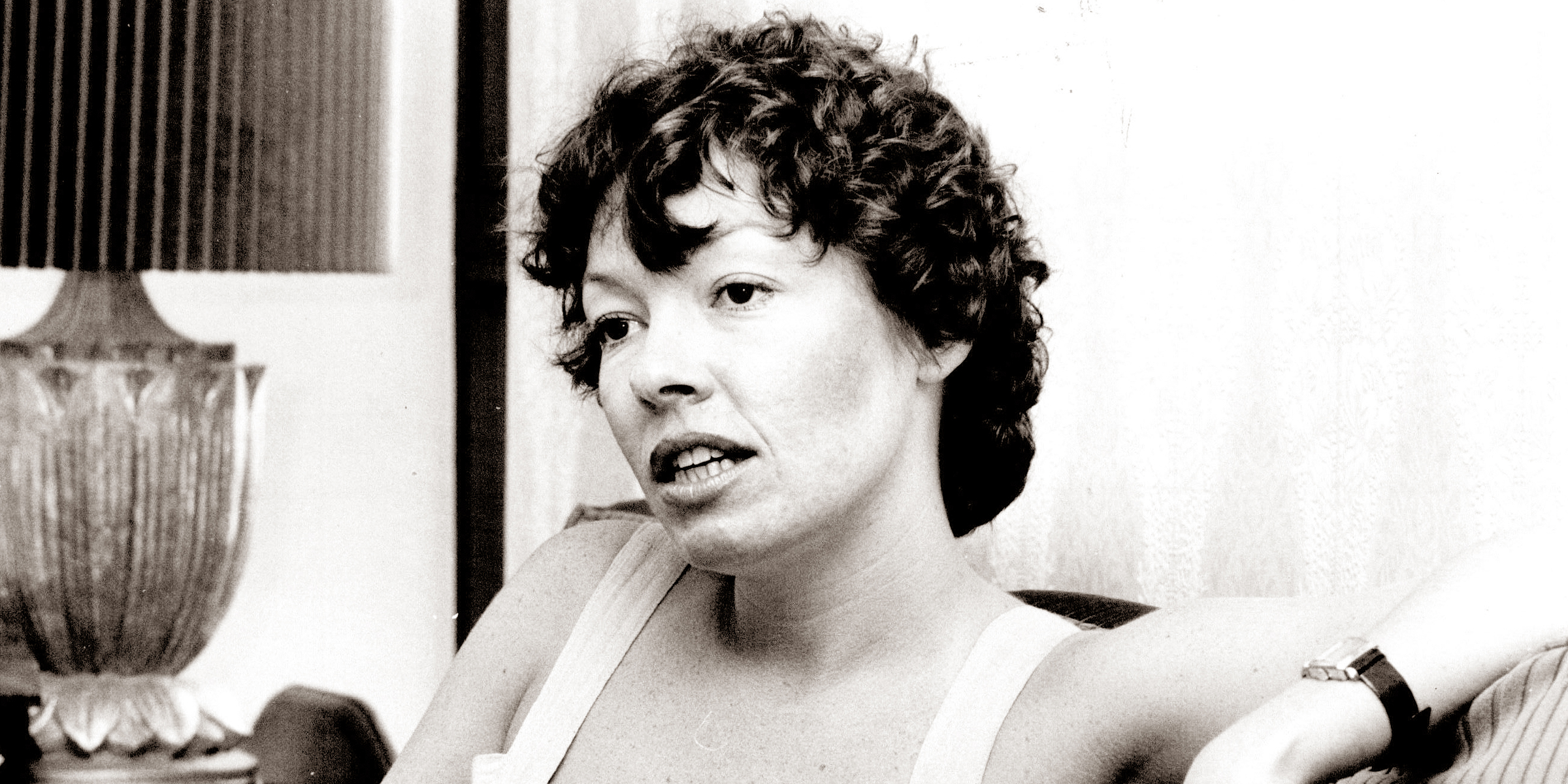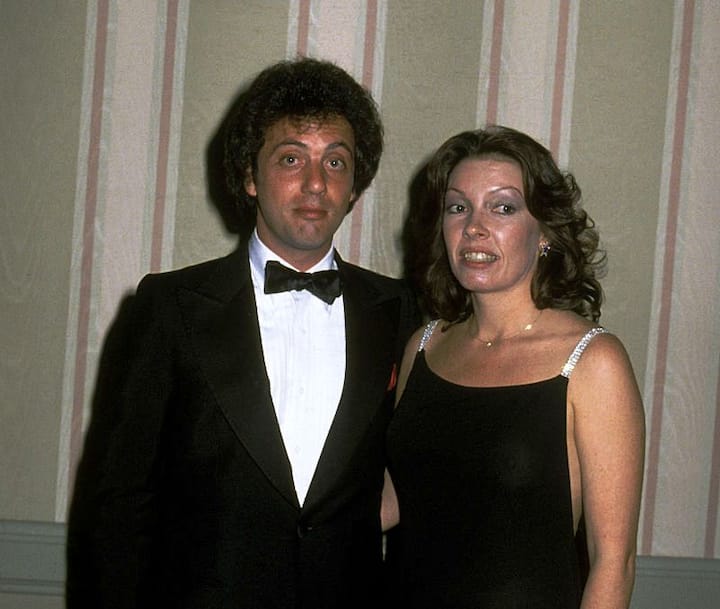Who is Elizabeth Ann Weber?
Elizabeth Ann Weber is an American artist known for her abstract paintings and sculptures.
Weber was born in 1959 in New York City. She studied at the School of the Art Institute of Chicago and the Whitney Museum of American Art Independent Study Program. Her work has been exhibited in museums and galleries around the world, including the Museum of Modern Art in New York City, the Tate Modern in London, and the Centre Pompidou in Paris.
Read also:The Evolution Of Scotty A Transformation Before And After Plastic Surgery
Weber's work is characterized by its use of bold colors and geometric shapes. She often incorporates found objects and recycled materials into her work, creating a sense of collage and assemblage. Her work has been praised for its originality and its ability to challenge traditional notions of painting and sculpture.
Personal details and bio data:
| Name: | Elizabeth Ann Weber |
| Born: | 1959 |
| Birth Place: | New York City |
| Occupation: | Artist |
| Art: | Abstract paintings and sculptures |
| School: | School of the Art Institute of Chicago and the Whitney Museum of American Art Independent Study Program |
| Exhibitions: | Museum of Modern Art (New York City), Tate Modern (London), Centre Pompidou (Paris) |
Elizabeth Ann Weber
Elizabeth Ann Weber is an American artist known for her abstract paintings and sculptures. Her work is characterized by its use of bold colors and geometric shapes, and she often incorporates found objects and recycled materials into her work.
- Abstract
- Geometric
- Bold
- Found objects
- Recycled materials
- Collage
- Assemblage
These key aspects come together to create Weber's unique and challenging body of work. Her paintings and sculptures are visually striking and thought-provoking, and they challenge traditional notions of art.
1. Abstract
Abstract art is a form of art that does not represent the world in a realistic way. Instead, abstract art uses shapes, colors, and textures to create a unique visual experience. Elizabeth Ann Weber is an abstract artist known for her bold use of color and geometric shapes.
- Color
Weber uses bright, bold colors in her paintings and sculptures. These colors create a sense of energy and excitement, and they draw the viewer's attention to the work.
Read also:
- Jennifer Greys Amazing Transformation In The 2000s A Beauty Evolution
- Shape
Weber uses geometric shapes in her work to create a sense of order and structure. These shapes are often simple and clean, but they can also be complex and intricate.
- Texture
Weber uses a variety of textures in her work, from smooth and glossy to rough and textured. These textures add depth and interest to the work, and they can also create a sense of movement.
- Composition
Weber carefully arranges the elements of her work to create a balanced and harmonious composition. She uses positive and negative space to create a sense of depth, and she often uses repetition and pattern to create a sense of rhythm.
Weber's abstract art is visually striking and thought-provoking. Her work challenges traditional notions of art, and it invites the viewer to see the world in a new way.
2. Geometric
Geometric shapes are a fundamental component of Elizabeth Ann Weber's abstract art. She uses geometric shapes to create a sense of order and structure in her work. These shapes are often simple and clean, but they can also be complex and intricate.
Weber's use of geometric shapes is influenced by her background in mathematics and architecture. She has said that she is interested in the way that geometric shapes can be used to create a sense of balance and harmony. She also sees geometric shapes as a way to explore the relationship between art and mathematics.
Weber's geometric shapes are often combined with other elements, such as color and texture, to create a unique visual experience. Her work is visually striking and thought-provoking, and it challenges traditional notions of art.
The use of geometric shapes in Elizabeth Ann Weber's art is a key aspect of her work. It is a way for her to explore her interests in mathematics, architecture, and art. Her use of geometric shapes is also a way for her to create a sense of order and structure in her work.
3. Bold
Elizabeth Ann Weber's use of bold colors and shapes is essential to her work. It creates a sense of energy and excitement, and it draws the viewer's attention to her paintings and sculptures.
- Color
Weber uses bright, saturated colors in her work. These colors create a sense of energy and excitement, and they draw the viewer's attention to the work. Weber is not afraid to use bold, contrasting colors, and she often uses them to create a sense of tension and drama.
- Shape
Weber also uses bold, geometric shapes in her work. These shapes create a sense of order and structure, but they can also be playful and whimsical. Weber often uses repetition and pattern to create a sense of rhythm and movement in her work.
- Texture
Weber uses a variety of textures in her work, from smooth and glossy to rough and textured. These textures add depth and interest to the work, and they can also create a sense of movement. Weber is not afraid to experiment with different textures, and she often uses them to create unexpected and surprising effects.
Weber's bold use of color, shape, and texture is essential to her work. It creates a sense of energy, excitement, and drama, and it draws the viewer's attention to her paintings and sculptures. Weber is not afraid to experiment with different materials and techniques, and she is always pushing the boundaries of what is possible in art.
4. Found objects
Found objects are a significant component of Elizabeth Ann Weber's abstract art. She incorporates found objects into her paintings and sculptures to create a sense of collage and assemblage. These objects can be anything from discarded pieces of wood and metal to old toys and clothing. Weber is interested in the way that found objects can be used to tell a story and to create a sense of history. She often uses found objects that have been weathered and worn, and she is drawn to the beauty of decay and imperfection.
Weber's use of found objects is also a way for her to explore the relationship between art and everyday life. She believes that art can be made from anything, and she is not afraid to use unconventional materials in her work. Weber's use of found objects challenges traditional notions of art, and it invites the viewer to see the world in a new way.
Weber's work is often inspired by the urban environment. She collects found objects from the streets of New York City, and she uses these objects to create her own unique brand of abstract art. Weber's work is a reflection of the city itself, and it captures the energy and vitality of urban life.
5. Recycled materials
Elizabeth Ann Weber is an artist known for her abstract paintings and sculptures that incorporate recycled materials. Her use of recycled materials is a way for her to explore the relationship between art and everyday life, and to challenge traditional notions of art.
- Environmentalism
Weber's use of recycled materials is a reflection of her commitment to environmentalism. She believes that art can be a powerful tool for raising awareness about environmental issues, and she hopes that her work will inspire others to think about the importance of recycling and sustainability.
- Creativity
Weber's use of recycled materials is also a testament to her creativity. She is not afraid to experiment with different materials and techniques, and she often finds new and innovative ways to use recycled materials in her work.
- Community
Weber's use of recycled materials is a way for her to connect with her community. She often collects recycled materials from friends, family, and neighbors, and she is always looking for new ways to incorporate recycled materials into her work.
- History
Weber's use of recycled materials is also a way for her to explore the history of art. She is interested in the way that recycled materials have been used in art throughout history, and she often incorporates recycled materials into her work in a way that references historical art movements.
Weber's use of recycled materials is a significant aspect of her work. It is a reflection of her commitment to environmentalism, her creativity, her community, and her interest in the history of art. Weber's work challenges traditional notions of art, and it invites the viewer to see the world in a new way.
6. Collage
Collage is a technique of art creation, primarily used in the visual arts, where the artwork is made from an assemblage of different forms, thus creating a new whole.
Elizabeth Ann Weber is an artist known for her abstract paintings and sculptures that incorporate recycled materials. She often uses collage techniques in her work, combining found objects, recycled materials, and paint to create unique and thought-provoking pieces.
Weber's use of collage is a way for her to explore the relationship between art and everyday life. She believes that art can be made from anything, and she is not afraid to use unconventional materials in her work. Collage allows her to combine different elements in new and unexpected ways, creating a sense of surprise and wonder.
Weber's work is often inspired by the urban environment. She collects found objects from the streets of New York City, and she uses these objects to create her own unique brand of abstract art. Her work is a reflection of the city itself, and it captures the energy and vitality of urban life.
7. Assemblage
Assemblage is an artistic technique that involves combining found objects and materials to create a new work of art. Elizabeth Ann Weber is an artist known for her abstract paintings and sculptures that incorporate recycled materials and found objects. Assemblage is a significant aspect of Weber's work, and it allows her to explore the relationship between art and everyday life.
- Found objects
Weber collects found objects from the streets of New York City and uses them in her assemblages. These objects can be anything from discarded pieces of wood and metal to old toys and clothing. Weber is interested in the way that found objects can tell a story and create a sense of history. She often uses found objects that have been weathered and worn, and she is drawn to the beauty of decay and imperfection.
- Recycled materials
Weber also uses recycled materials in her assemblages. She believes that art can be made from anything, and she is not afraid to use unconventional materials in her work. Weber's use of recycled materials is a reflection of her commitment to environmentalism, and it also allows her to explore the history of art.
- Collage
Weber often uses collage techniques in her assemblages. She combines found objects and recycled materials with paint and other media to create unique and thought-provoking pieces. Weber's use of collage allows her to explore the relationship between different materials and textures, and it also allows her to create a sense of surprise and wonder.
- Narrative
Weber's assemblages often have a narrative quality to them. She uses found objects and recycled materials to tell stories about the urban environment and the people who live in it. Weber's work is often inspired by her own experiences living in New York City, and she uses her art to explore the social and political issues that affect the city.
Assemblage is a significant aspect of Elizabeth Ann Weber's work. It allows her to explore the relationship between art and everyday life, and it challenges traditional notions of art. Weber's assemblages are unique and thought-provoking, and they offer a glimpse into the artist's own experiences and perspectives.
FAQs about Elizabeth Ann Weber
Elizabeth Ann Weber is an American artist known for her abstract paintings and sculptures that incorporate recycled materials and found objects. Her work is often inspired by the urban environment and explores the relationship between art and everyday life. Here are some frequently asked questions about Elizabeth Ann Weber and her work:
Question 1: What is Elizabeth Ann Weber's artistic style?
Elizabeth Ann Weber's artistic style is abstract. She uses bold colors, geometric shapes, and found objects to create unique and thought-provoking pieces. Her work is often inspired by the urban environment and explores the relationship between art and everyday life.
Question 2: What materials does Elizabeth Ann Weber use in her work?
Elizabeth Ann Weber uses a variety of materials in her work, including recycled materials, found objects, paint, and other media. She is not afraid to experiment with different materials and techniques, and she often finds new and innovative ways to use recycled materials in her work.
Question 3: What is the meaning behind Elizabeth Ann Weber's work?
Elizabeth Ann Weber's work often has a narrative quality to it. She uses found objects and recycled materials to tell stories about the urban environment and the people who live in it. Weber's work is often inspired by her own experiences living in New York City, and she uses her art to explore the social and political issues that affect the city.
Question 4: Where can I see Elizabeth Ann Weber's work?
Elizabeth Ann Weber's work has been exhibited in museums and galleries around the world, including the Museum of Modern Art in New York City, the Tate Modern in London, and the Centre Pompidou in Paris. You can also view her work on her website.
Question 5: How can I learn more about Elizabeth Ann Weber?
You can learn more about Elizabeth Ann Weber by visiting her website, reading articles and interviews about her work, and attending exhibitions of her work. You can also follow her on social media to stay up-to-date on her latest projects.
Summary
Elizabeth Ann Weber is a talented and innovative artist who challenges traditional notions of art. Her work is unique and thought-provoking, and it offers a glimpse into the artist's own experiences and perspectives.
Transition to the next article section
Conclusion
Elizabeth Ann Weber is a significant artist whose work challenges traditional notions of art. She uses bold colors, geometric shapes, recycled materials, and found objects to create unique and thought-provoking pieces. Her work is often inspired by the urban environment and explores the relationship between art and everyday life.
Weber's work is a reflection of her own experiences and perspectives. She uses her art to tell stories about the city and the people who live in it. Her work is also a reflection of her commitment to environmentalism and her belief that art can be made from anything.
Elizabeth Ann Weber is an important voice in contemporary art. Her work is a reminder that art is not limited to traditional materials and techniques. Art can be made from anything, and it can be used to express anything.


